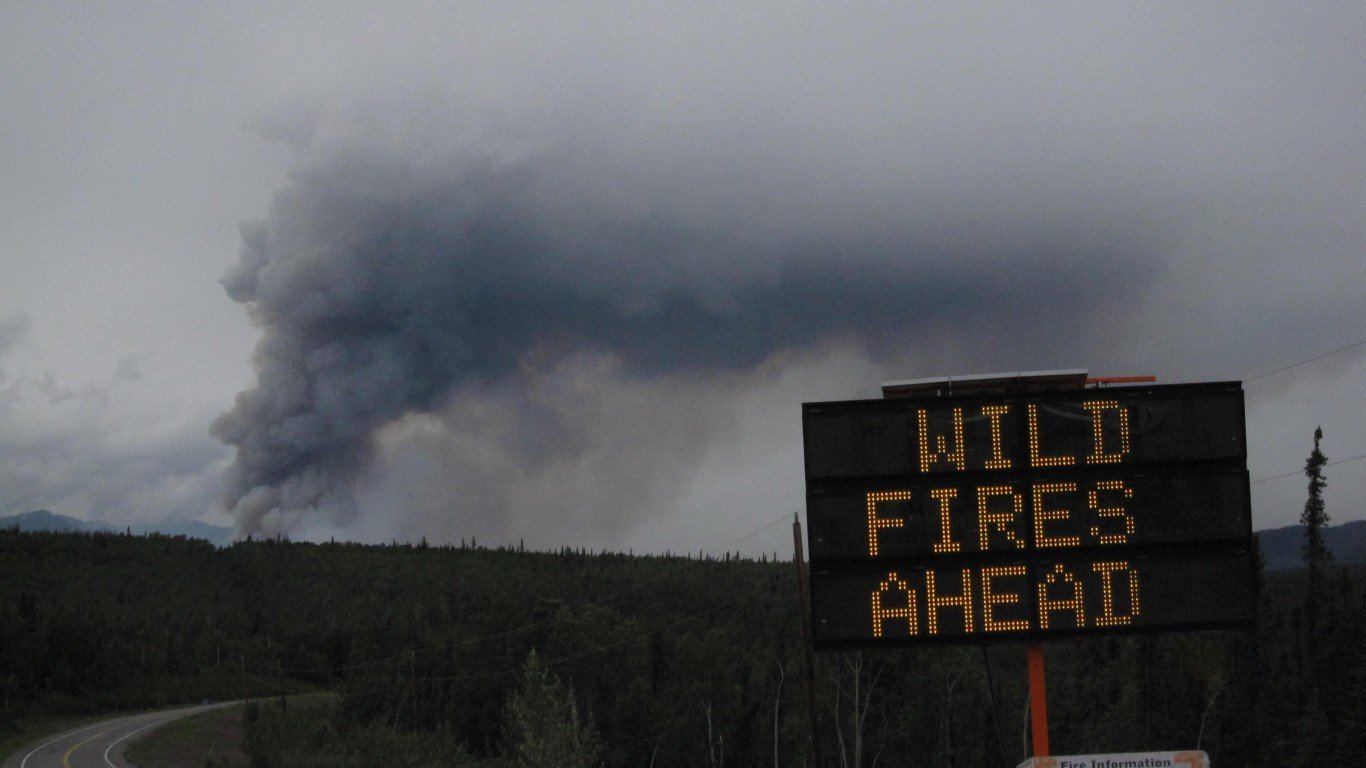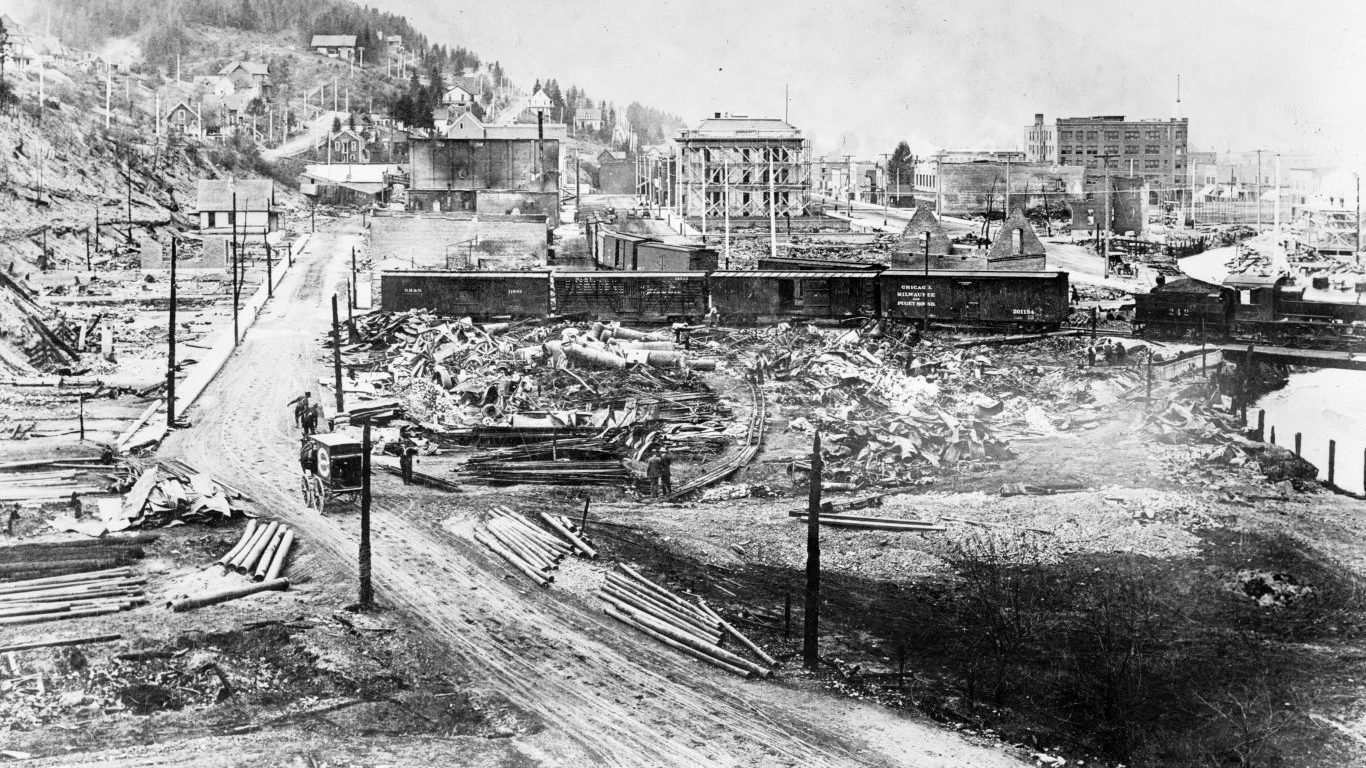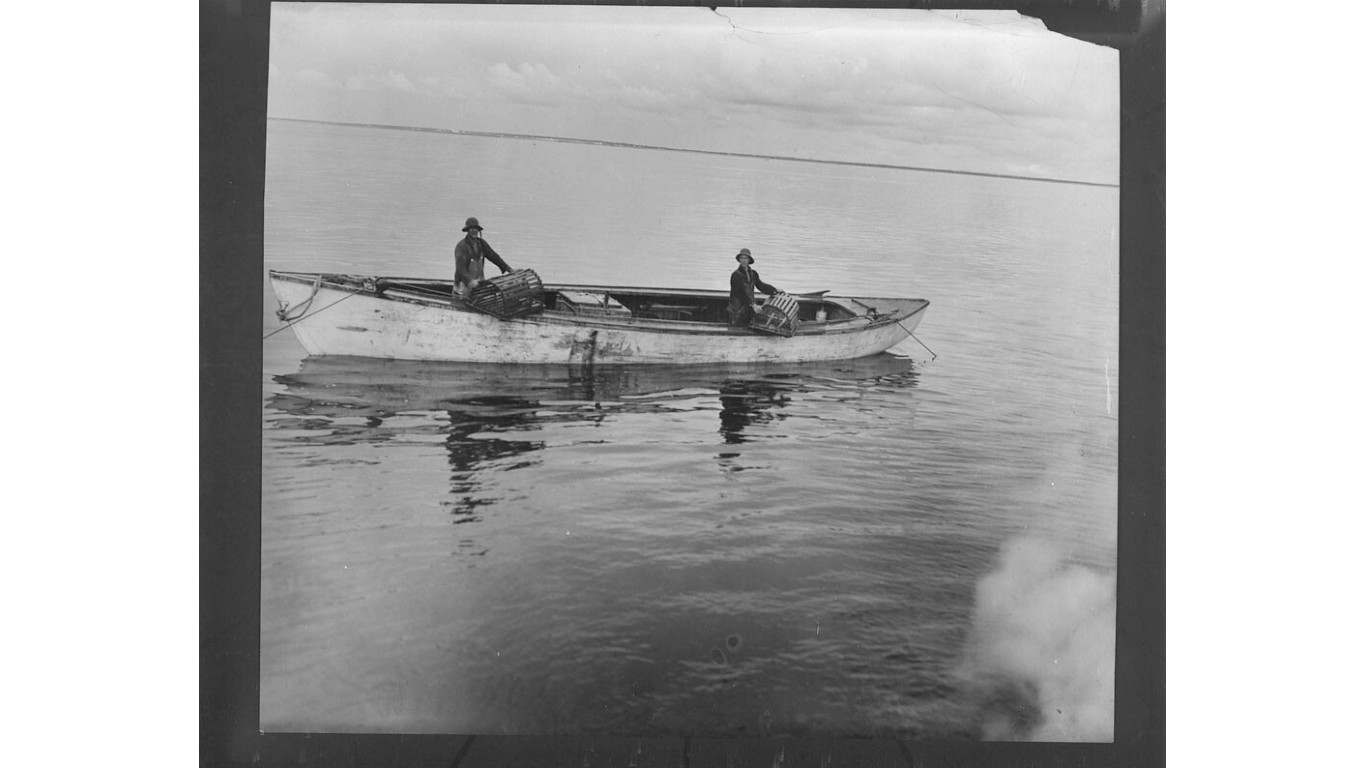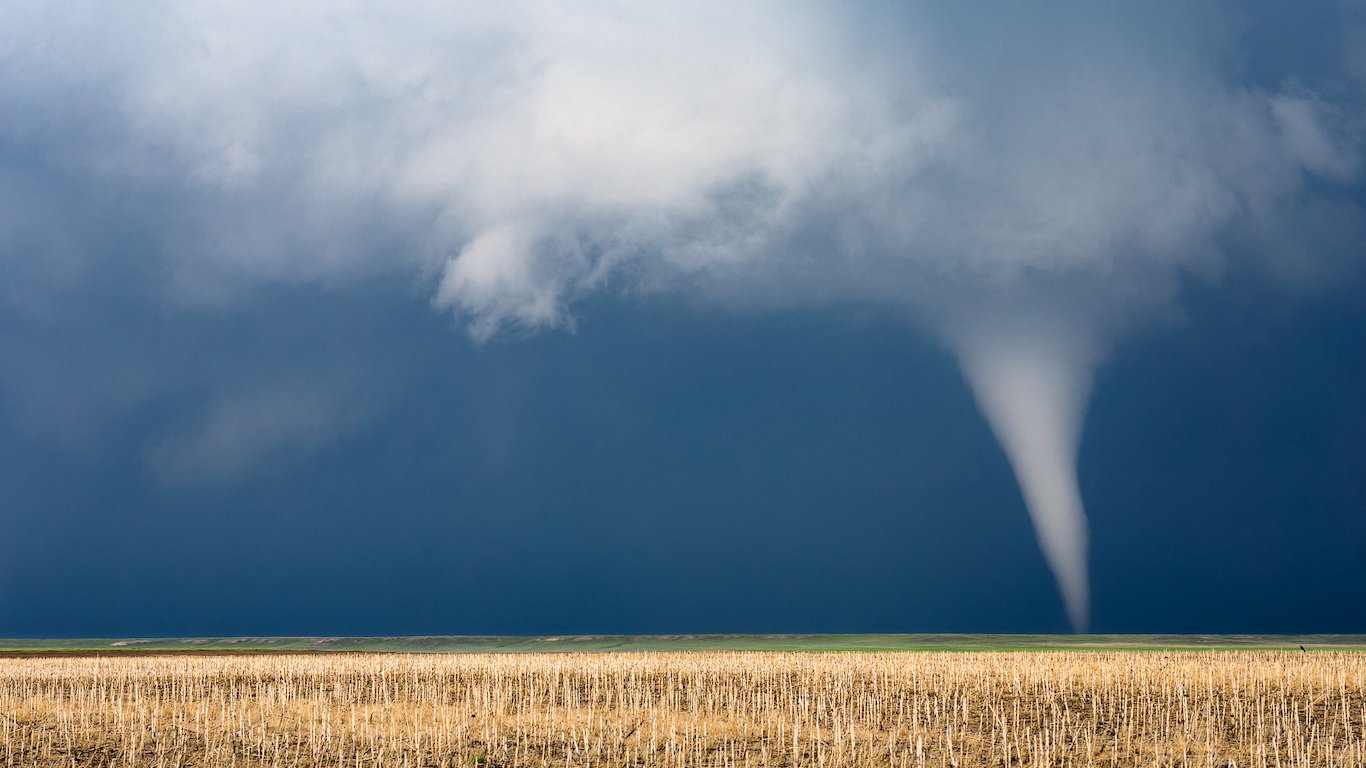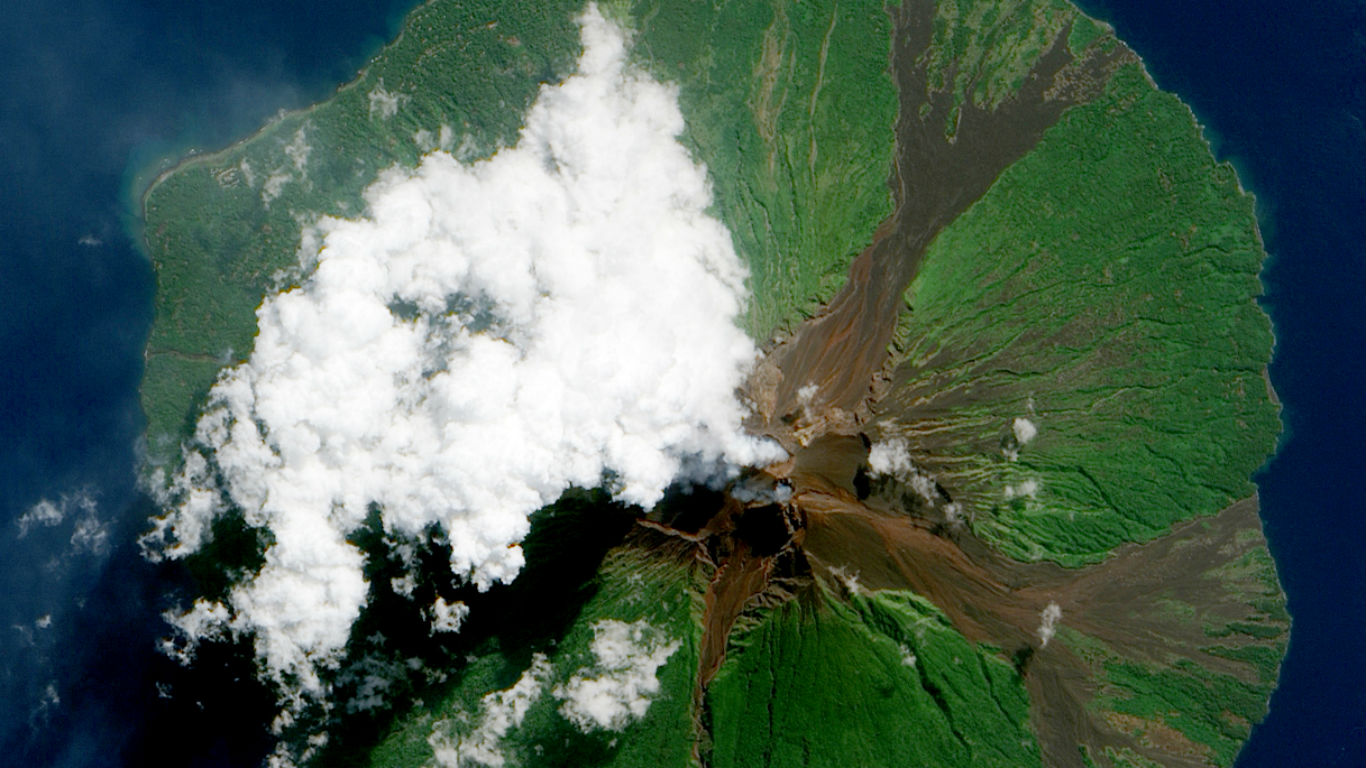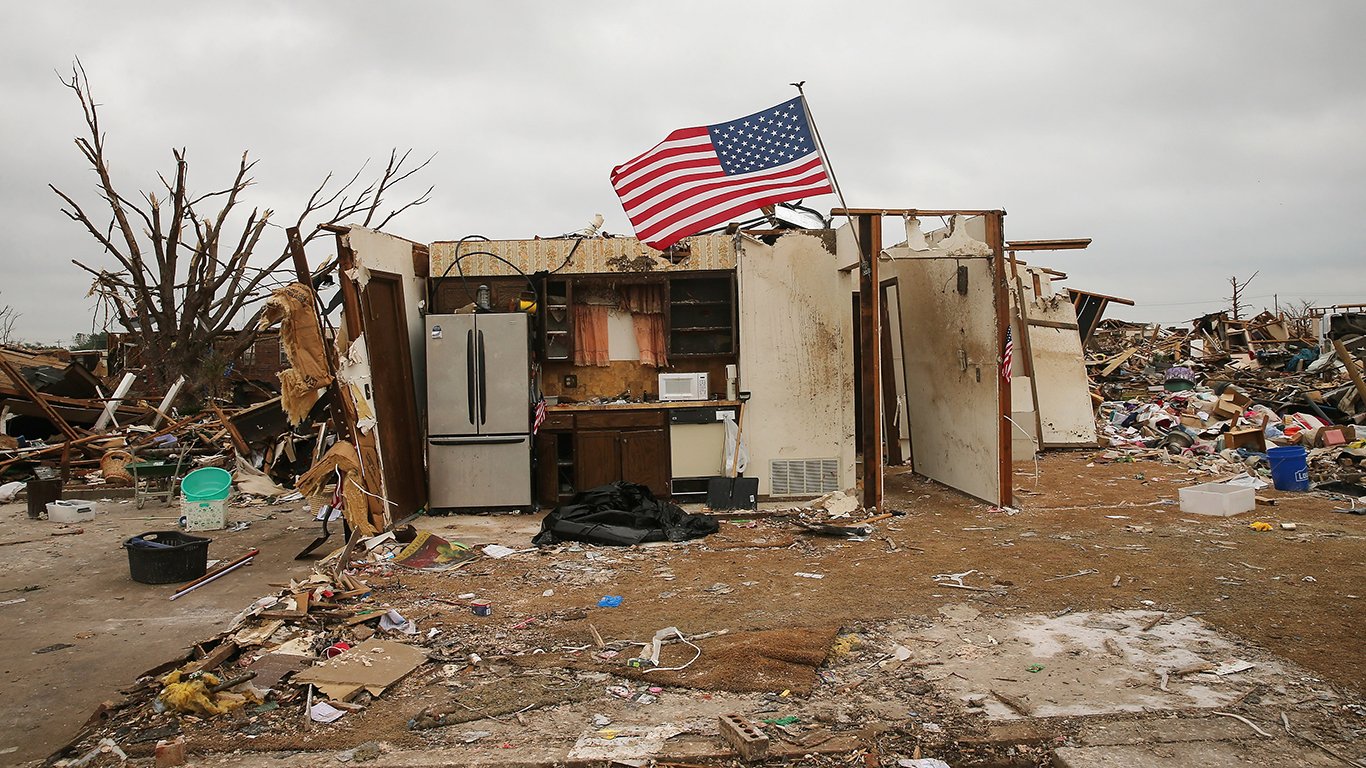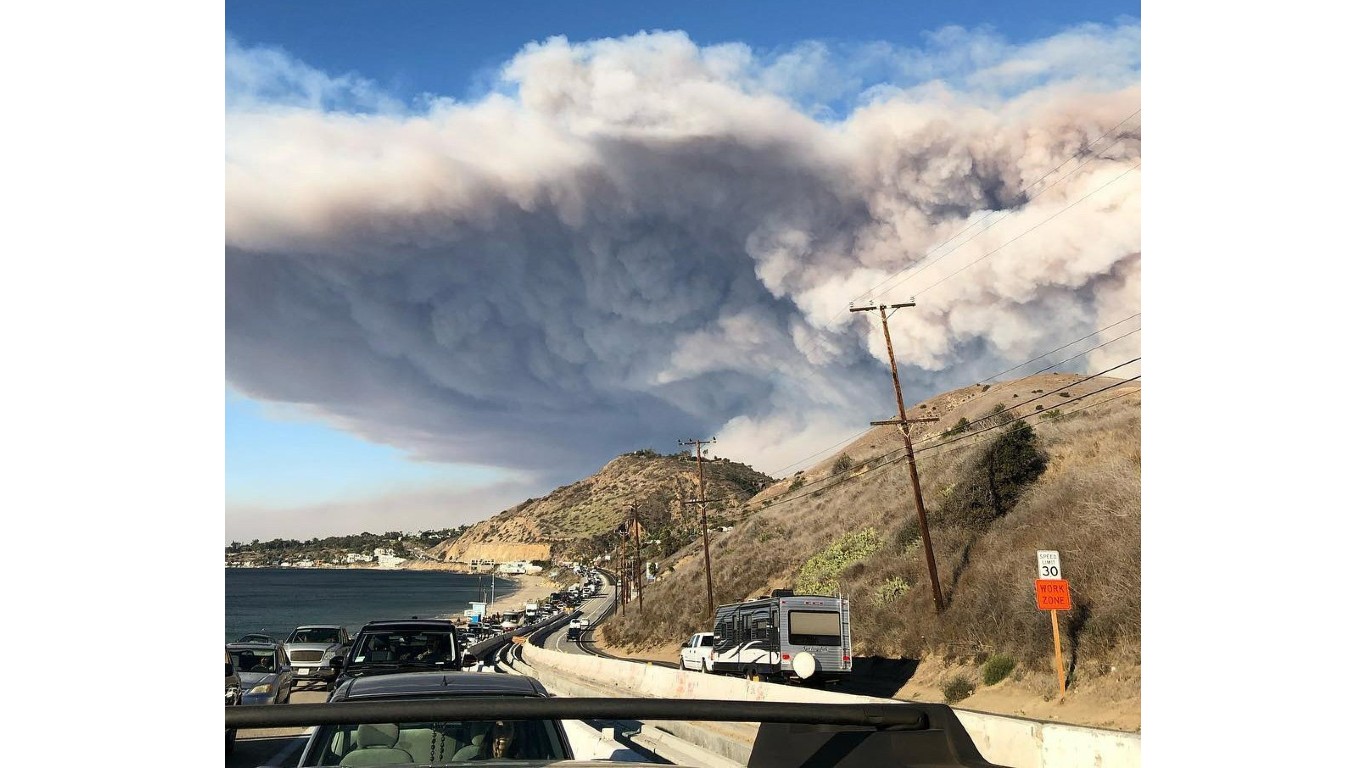

Terrible wildfires burning in Canada this week have blanketed parts of the American Northeast, including New York City, in a thick haze. The smoke pollution is dangerous to breathe, containing particulates that can cause all kinds of serious health problems.
Wildfires have ravaged the United States for centuries, and many experts project they will only worsen along with climate change. In the nation’s history, fires have wreaked widespread destruction in major cities and in rural areas.
Since 2000, an average of 70,072 wildfires a year have burned an average of 7.0 million acres. In the 1990s, the average acreage burned was less than half, at 3.3 million, though the average of annual wildfires was higher, at 78,600. In 2022, a reported 66,225 wildfires burned just over 7.5 million acres. (These are the most catastrophic fires and explosions in US history.)
To determine the worst wildfires in U.S. history, 24/7 Wall St. referenced historical data on wildfires within the United States. Wildfires are ranked by the size of these wildfires in total acreage.
Recent years have been especially destructive for the West Coast, but the worst wildfires in U.S. history are also mostly in the West, but also the Midwest and South. (This is how much of every state has burned in wildfires.)
Different parts of the country do not necessarily carry the same risk of experiencing a fire hazard. In fact, according to the NIFC, more wildfires occur in the East, which includes central states, but the wildfires in the West are larger and burn more acreage.
Here’s a look at the 13 most destructive wildfires in US history:

13. The Thumb Fire of 1881
> Total acreage estimated: 1 million acres
> Area affected: Central Michigan
> Date: September 1881
> Acres burned equivalent: Five times the size of New York City
This wildfire started in early September as a result of drought, hurricane-force winds, heat, and the ecological damage that was the result of the logging techniques of that time. Also known as the Great Forest Fire of 1881, the blaze killed over 275 people and destroyed more than 3,000 buildings.
[in-text-ad]

12. 2020 Oregon Wildfires
> Total acreage estimated: 1 million
> Area affected: Oregon
> Date: August to November 2020
> Acres burned equivalent: Rhode Island
These fires are known as some of the most destructive on record in the state of Oregon. They were part of an especially destructive wildfire season that year. These fires were responsible for the deaths of 33 people and the destruction of thousands of homes in the region.
11. Taylor Complex Fire
> Total acreage estimated: 1.3 million acres
> Area affected: Central and Eastern Alaska
> Date: May to August 2004
> Acres burned equivalent: One fourth of Massachusetts
The Taylor Complex Fire was part of Alaska’s record breaking fire season in 2004. At the time, it was the single largest wildfire in the United States between 1997 and 2007. This fire played a large role in Alaska’s fire season that year, which saw a total of 6.6 million acres burned.
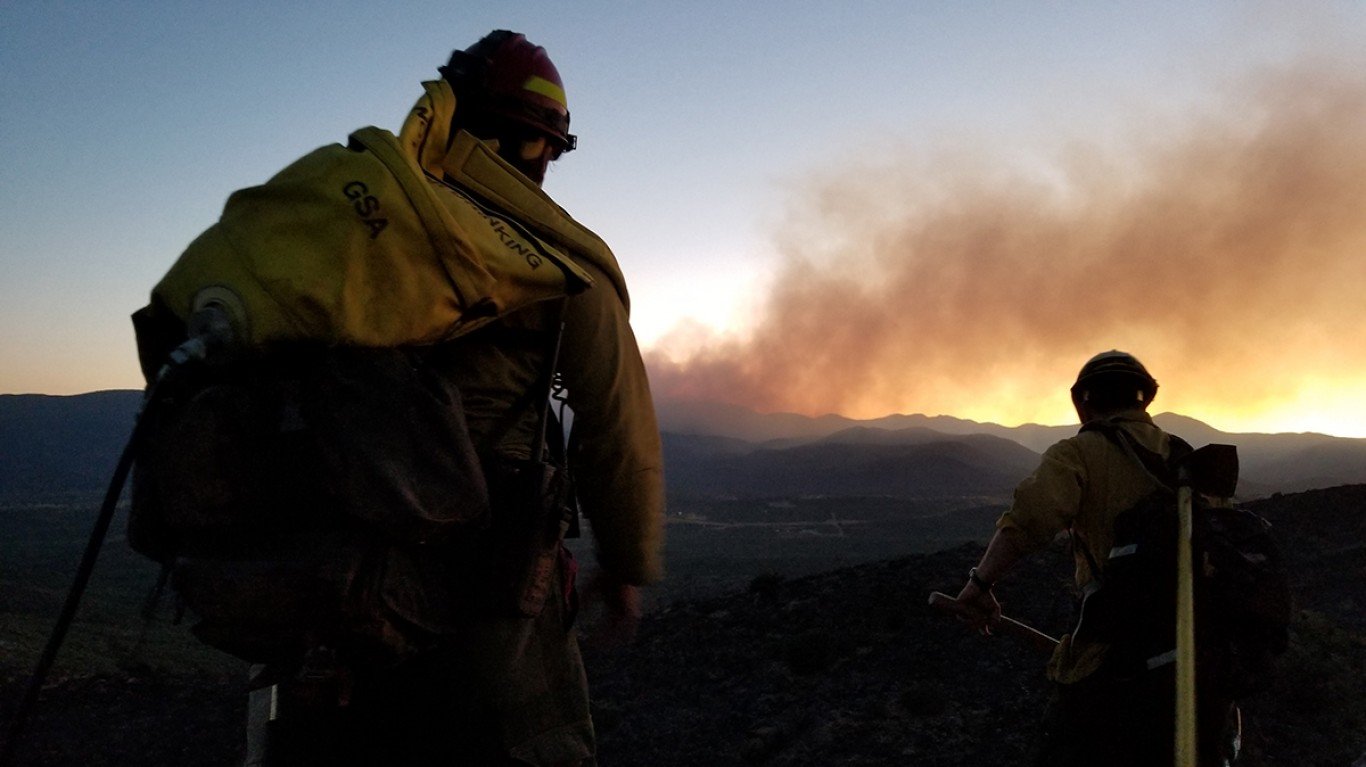
10. 2017 Montana Wildfires
> Total acreage estimated: 1.3 to 1.4 million acres
> Area affected: Montana
> Date: June to September 2017
> Acres burned equivalent: Three-times the size of Houston, TX
Drought was largely responsible for much of the destruction in Montana caused by a series of fires. Fortunately, rain and snow slowed what would have been an even more devastating blaze.
[in-text-ad-2]
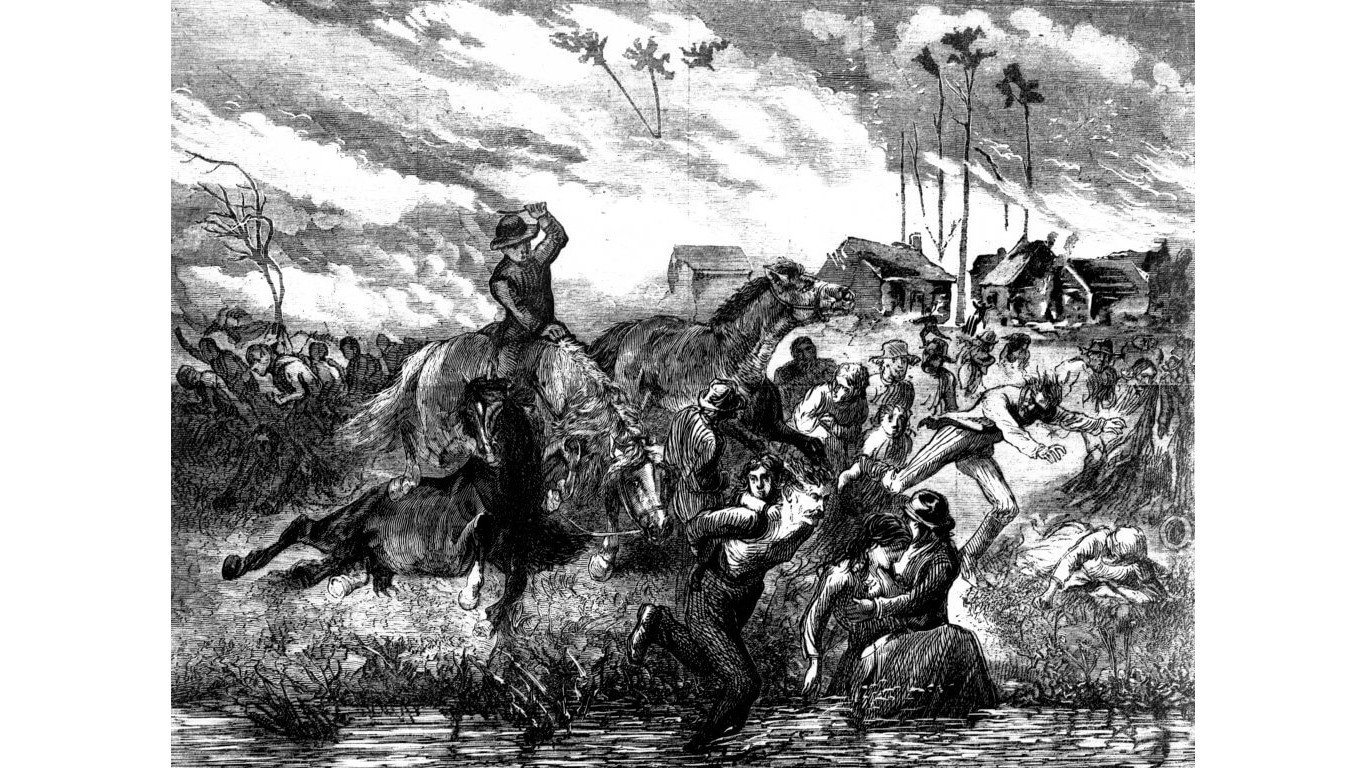
9. Peshtigo Fire of 1871
> Total acreage estimated: 1.2 to 1.5 million acres
> Area affected: Northeastern Wisconsin
> Date: October 1871
> Acres burned equivalent: Three-times the size of Jacksonville, FL
The Peshtigo Fire was an especially large forest that covered most of the southern half of Michigan’s Upper Peninsula. This fire is often overshadowed by the Great Chicago Fire that occurred on the same day, despite the fact that the Peshtigo Fire claimed over 1,200 lives, five times as many as the Great Chicago Fire.
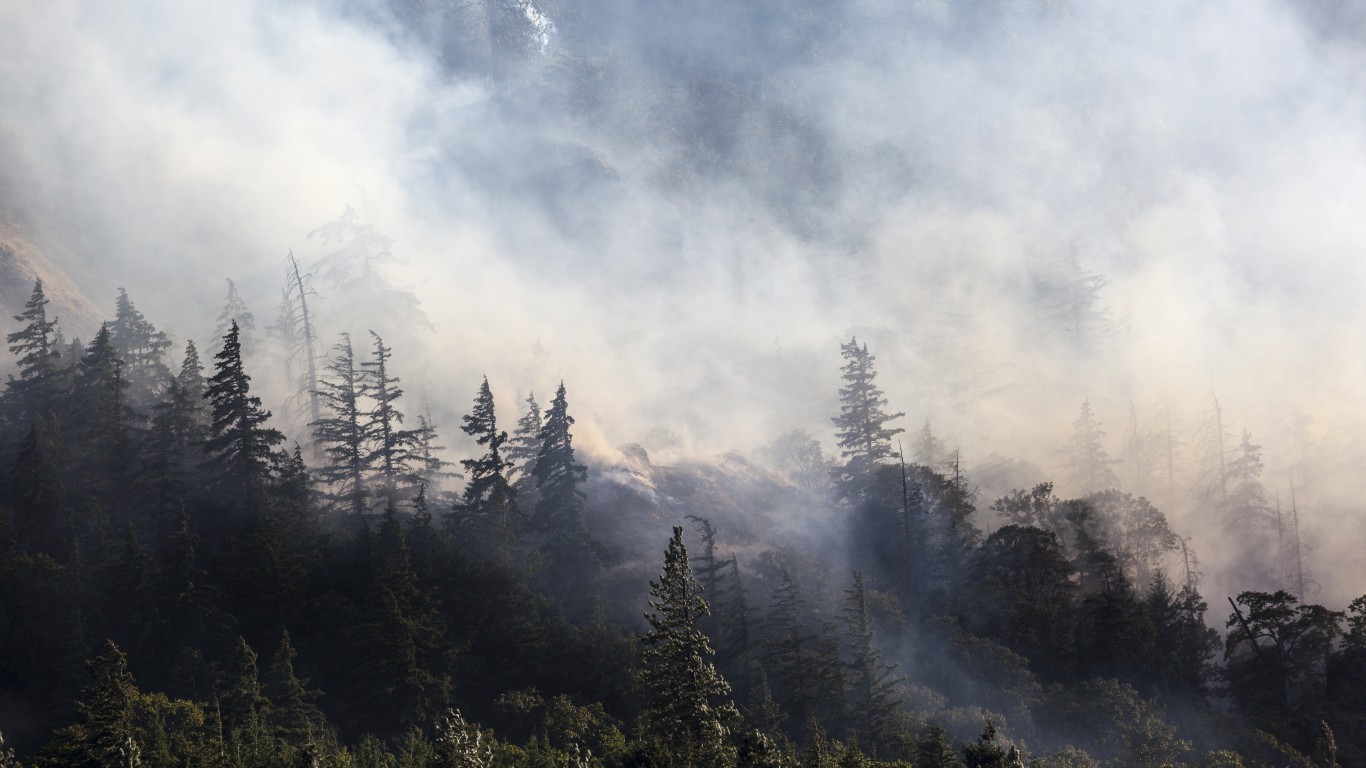
8. The Great Fire
> Total acreage estimated: 1.5 million
> Area affected: Oregon
> Date: November 1845
> Acres burned equivalent: Five times the size of Los Angeles, CA
Like most fires of that era, hot and dry summer conditions played a role in the fire. While there is not much to go off of in terms of historical accounts for this fire, the measured area affected ranks it as the biggest in the history of the state.
[in-text-ad]
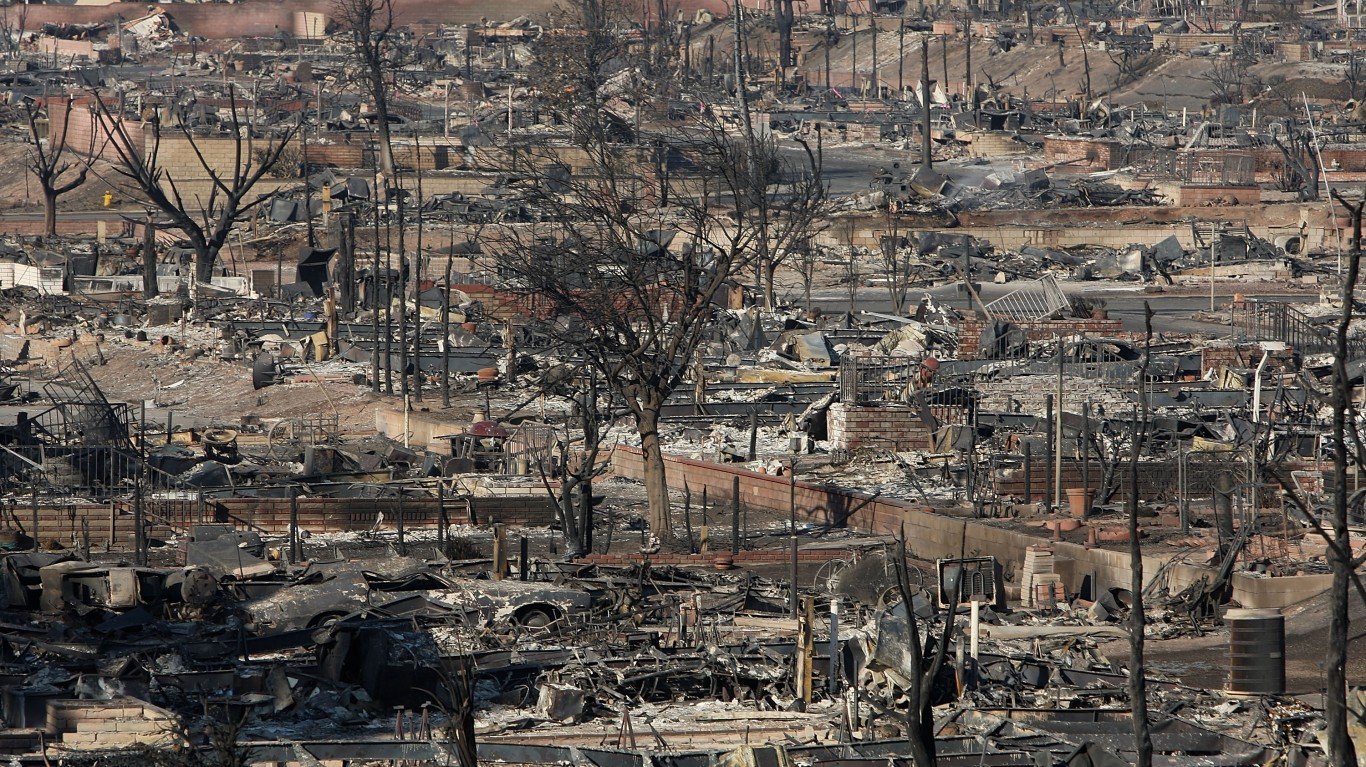
7. 2008 California Wildfires
> Total acreage estimated: 1.6 million acres
> Area affected: Northern and Southern California
> Date: April to November 2008
> Acres burned equivalent: Roughly the size of Delaware
The 2008 season was considered one of the most devastating in the history of the state. Even though there were only 6,255 fires, only two-thirds as many as the year before, the damage was significantly greater. While 1 million acres burned in 2007, more than 60% that number burned in 2008.
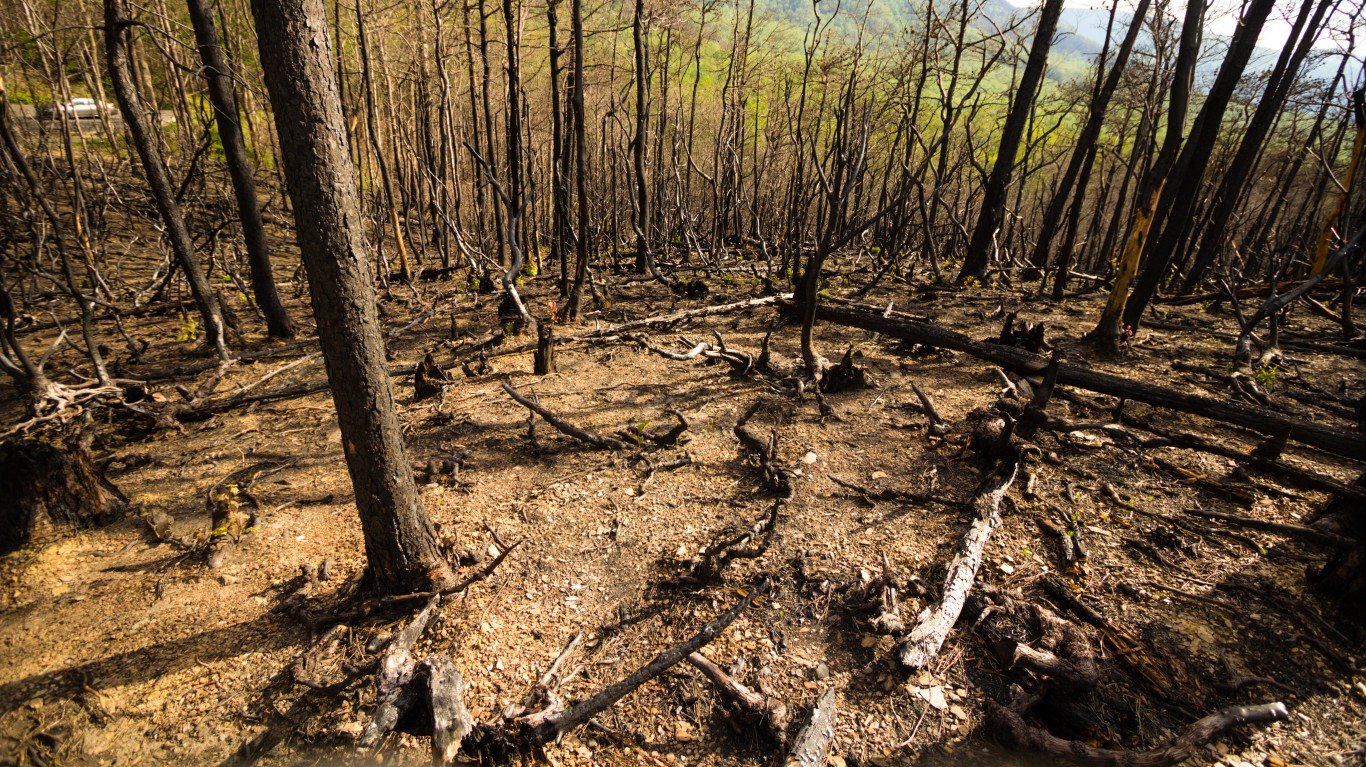
6. The Great Fire of 1898
> Total acreage estimated: 2.5 million
> Area affected: South Carolina, North Carolina
> Date: February 1898
> Acres burned equivalent: One half of New Jersey
A series of wildfires raged across South Carolina and North Carolina in mid February. Reports at the time indicate that 14 people were killed in the blaze, and numerous homes and sawmills were destroyed. Strong 40 mile per hour winds precipitated even more wildfires in the region.
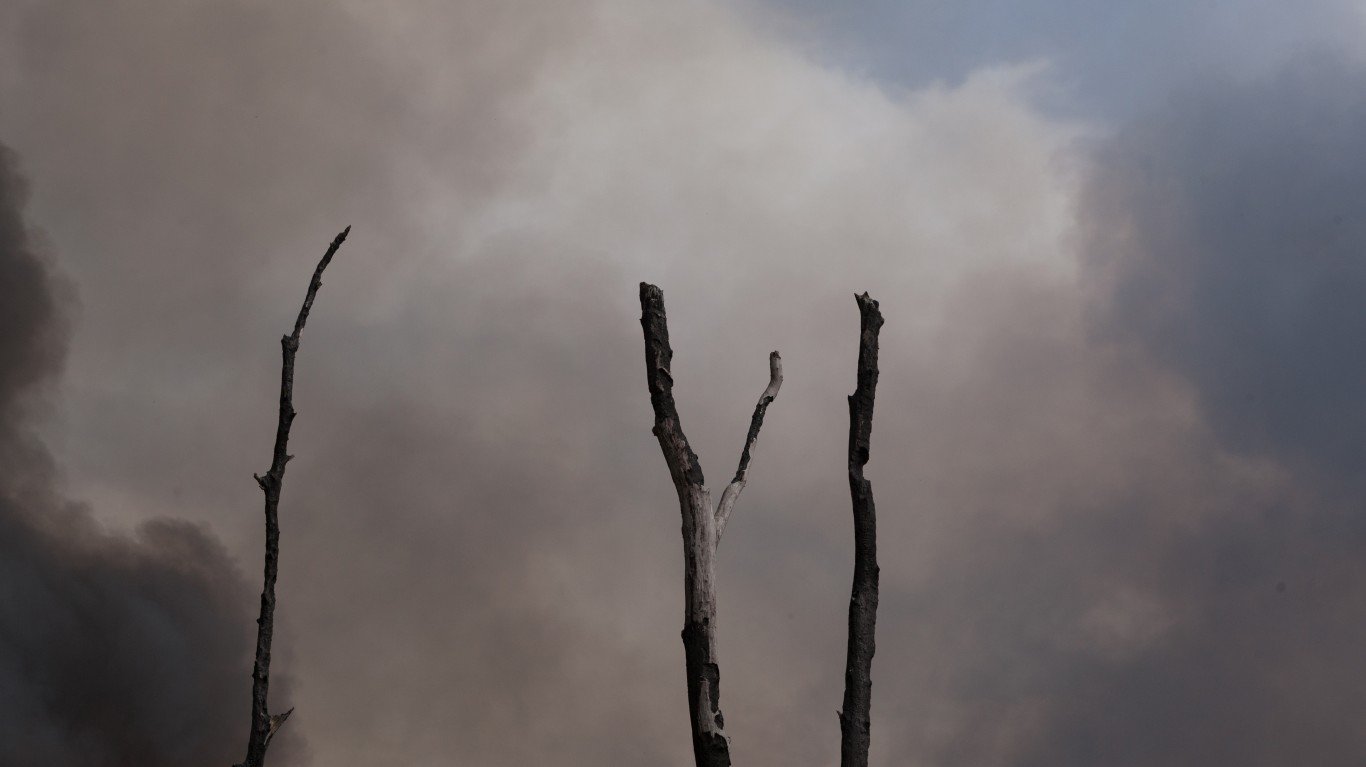
5. The Great Michigan Fire of 1871
> Total acreage estimated: 2.5 million acres
> Area affected: Southeastern Michigan
> Date: October 1871
> Acres burned equivalent: One third of Maryland
Some reports detail this fire as being started by lightning or even a meteor shower, a long dry summer, and the logging practices of the day contributed fuel. This blaze was fanned on by the same winds that contributed to the Great Chicago Fire and the Peshtigo Fire. The deaths from this fire are unknown but are estimated above 500.
[in-text-ad-2]
4. The Great Fire of 1910
> Total acreage estimated: 3+ million acres
> Area affected: Idaho, Montana, Washington, and British Columbia
> Date: August=1910
> Acres burned equivalent: Half of Hawaii
This is commonly referred to as the Big Blowup or the Big Burn. This fire did not last particularly long, only two day, but it was incredibly devastating. The fire consumed entire towns in the Northwest region and contributed to the deaths of 86 people, mostly firefighters.
3. Miramichi Fire of 1825
> Total acreage estimated: 3+ million acres
> Area affected: New Brunswick and Maine
> Date: October 1825
> Acres burned equivalent: Roughly the size of Connecticut
The Great Fire of Miramichi was a massive forest fire that devastated communities in the upper East Coast. At least 160 people died in the blaze and thousands were left homeless as the fire tore through lumber camps on both sides of the Miramichi river. The fire spilled over into Canada and eventually helped define the border between the U.S. and its neighbor to the North.
[in-text-ad]
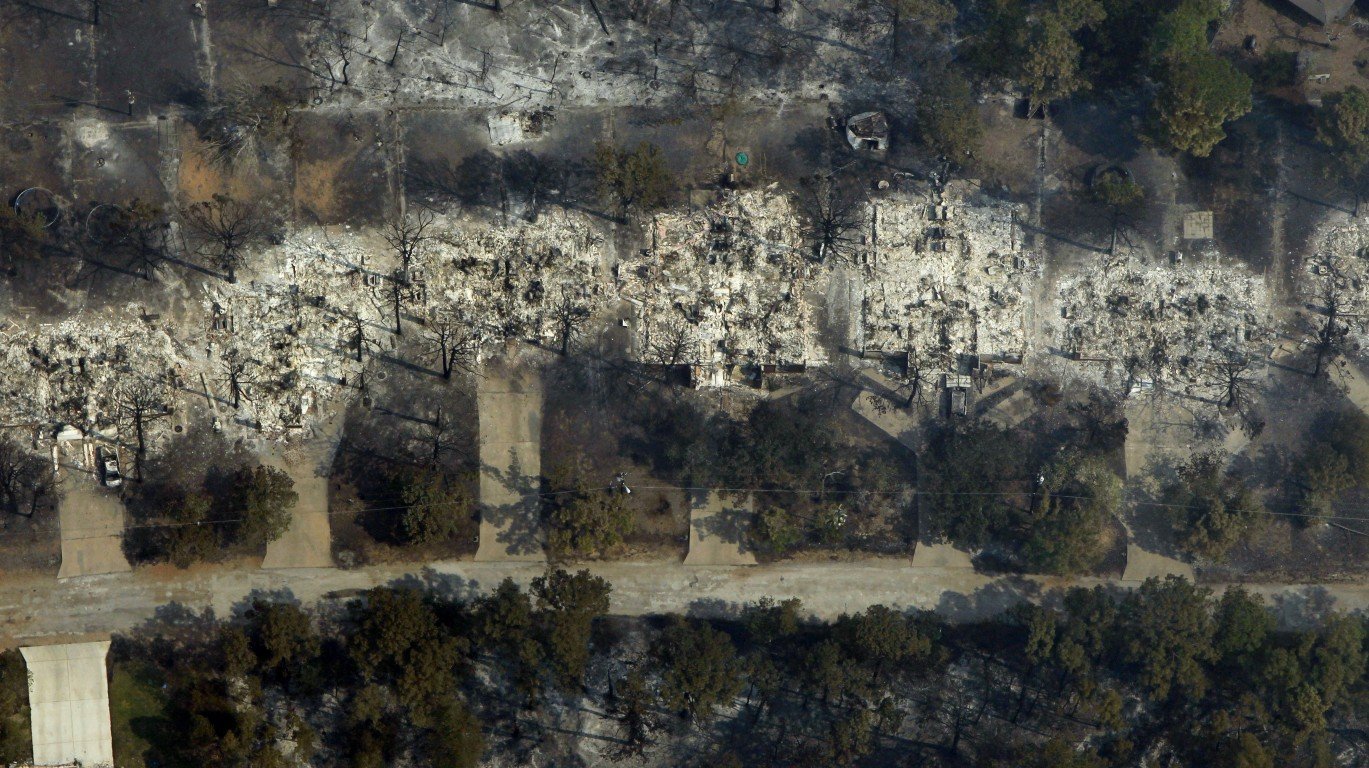
2. 2011 Texas Wildfire
> Total acreage estimated: 4+ million acres
> Area affected: Central and Southern Texas
> Date: April to September 2011
> Acres burned equivalent: One fourth of South Carolina
This was the worst fire season in the history of Texas, with over 31,000 fires spanning 4 million acres, which was double the previous record. The fire losses were the worst in Texas history and only compounded the $5.2 billion damage caused by the severe drought of that year.

1. 2020 California Wildfires
> Total acreage estimated: 4.4 million acres
> Area affected: California and Southern Oregon
> Date: February to December 2020
> Acres burned equivalent: Three times the size of Delaware
The 2020 wildfire season in California was considered the worst in U.S. history. Nearly 10,000 fires raged across the state, affecting over 4 million acres, or roughly 4% of the entire state. These fires destroyed over 11,000 structures and caused just over $12 billion in damage, consisting of $10 billion in property damage and $2 billion in fire suppression costs.
Essential Tips for Investing: Sponsored
A financial advisor can help you understand the advantages and disadvantages of investment properties. Finding a qualified financial advisor doesn’t have to be hard. SmartAsset’s free tool matches you with up to three financial advisors who serve your area, and you can interview your advisor matches at no cost to decide which one is right for you. If you’re ready to find an advisor who can help you achieve your financial goals, get started now.
Investing in real estate can diversify your portfolio. But expanding your horizons may add additional costs. If you’re an investor looking to minimize expenses, consider checking out online brokerages. They often offer low investment fees, helping you maximize your profit.
Thank you for reading! Have some feedback for us?
Contact the 24/7 Wall St. editorial team.
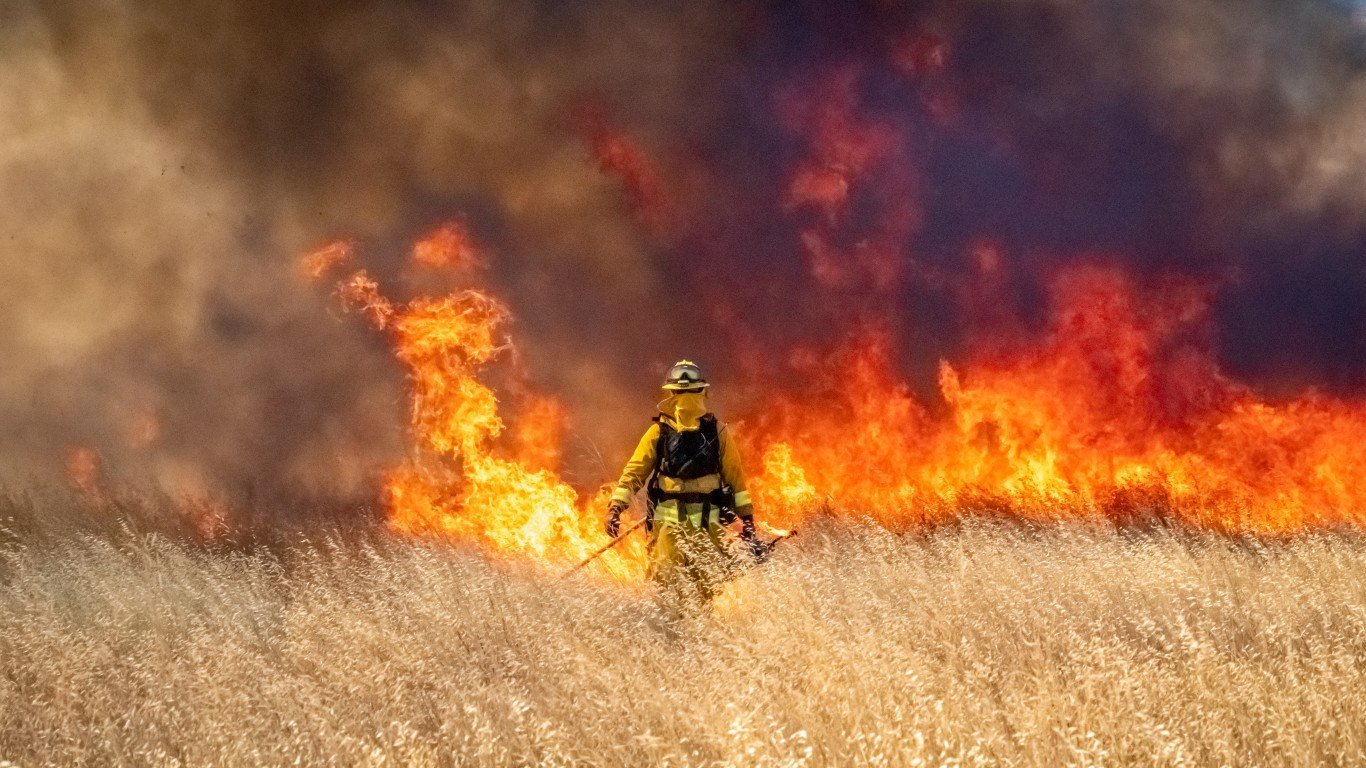 24/7 Wall St.
24/7 Wall St.